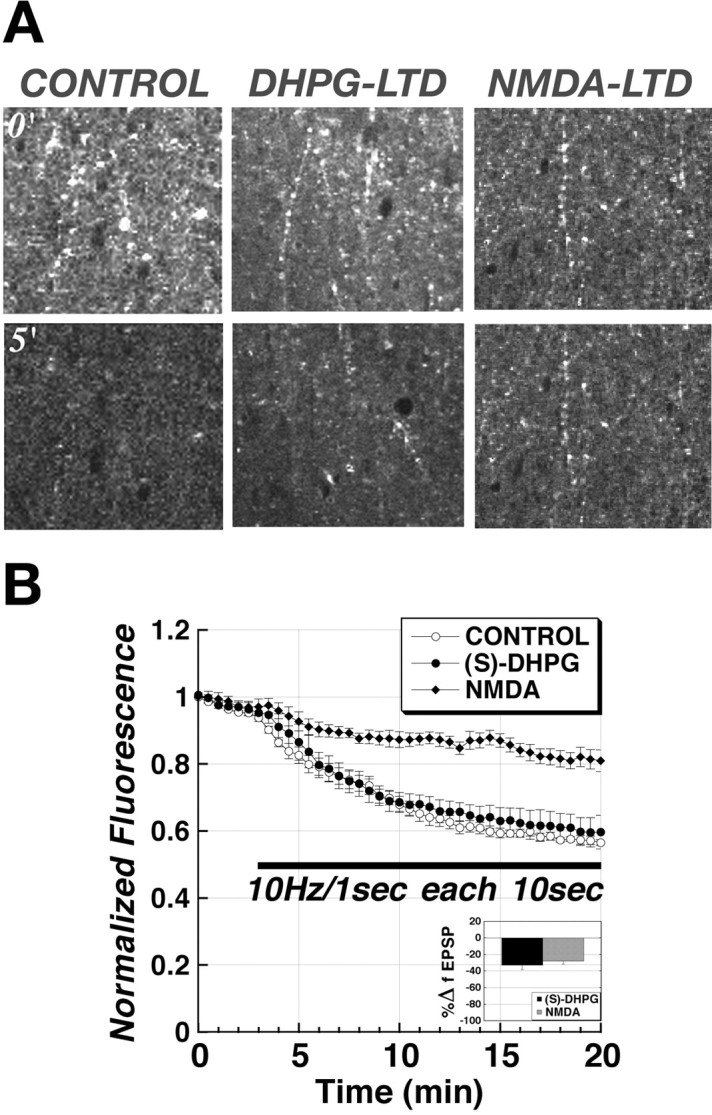Figure 9.

Direct two-photon imaging of FM1-43 release from the RRP of Schaffer collateral terminals confirms that NMDA-LTD but not mGluR-LTD is associated with a reduction in rate of release from the RRP. A, Two-photon excitation fluorescent images of RRP puncta in the same field of CA1 stratum radiatum immediately before (0′; top row) and 5 min after (5′; bottom row) the start of unloading Schaffer collateral stimulation in a control slice versus slices pretreated with either (S)-DHPG (25 μm, 5 min; mGluR-LTD) or NMDA (10 μm, 3 min; NMDA-LTD). B, Time courses of Schaffer collateral stimulus-evoked (filled bar; 10 Hz, 1 s bursts each 10 s) FM1-43 destaining from the RRP in control slices (open circles; n = 5) versus slices in which LTD had been induced either by bath application of (S)-DHPG (filled circles; 25 μm; n = 6) or NMDA (filled diamonds; 10 μm; n = 5) 30 min before start of destaining stimulation. Inset, Mean ± SEM. LTD of a field EPSP recorded in the same slices 15 min after bath application of either (S)-DHPG (black bar) or NMDA (gray bar) is shown.
